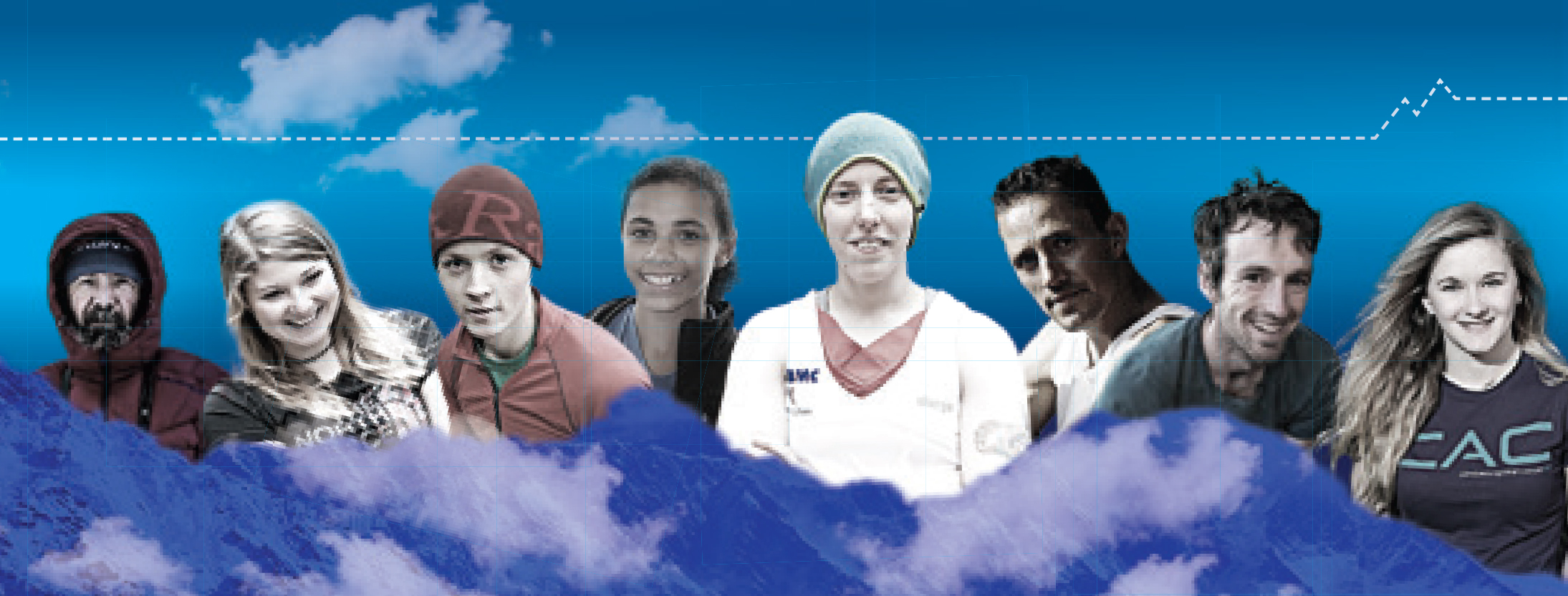As the BMC marks its 70th anniversary, we turn our sights to the next 70 years. What does the future hold? We polished our crystal ball and invited the BMC ambassadors to gaze into it.
Chris Townsend: Long-distance walker
@townsendoutdoor
In 5 years: More people take up hill walking. Hopefully progress on access rights and more protection for wild areas. Or, maybe not…
In 25 years: Walking becomes much easier and more popular after the development of auto-navigation devices. Floating rucksacks follow behind you, and England and Wales see Scottish-style access legislation.
In 70 years: Complete protection, restoration and expansion of wild land. Well, I can dream…
Hazel Findlay: Adventure climber
@hazel_findlay
In 5 years: We’ll be using modern technology to aid adventure: quadcopters, iPhones, satphones. There will probably be an app to rescue you from a crevasse.
In 25 years: Legions of boulderers realise they’ve been wasting their lives at the climbing wall and unleash themselves on to trad routes, resulting in the hardest grades ever seen, 20 metres above an RP. All the people who used to trad climb have taken up alpi-solo-base-ski to get their kicks, combining the scariest elements of alpine climbing, base jumping, free soloing and skiing.
In 70 years: We'll have probably exterminated ourselves, so it's not worth worrying too much.
Calum Muskett: Alpine climber
@CalumMuskett
In 5 years: Faster repeats of harder alpine rock and mixed routes. Top-end difficulty free climbs like those found on El Cap will find their way to more remote mountain areas. There’s a move away from speed walking up north faces.
In 25 years: Capsule style becomes obsolete in favour of the single-push style as hordes of young climbers discover that hauling and aid climbing is just very slow. Global warming stabilises Patagonian weather, leading to stacks of diffi cult free routes. I wish.
In 75 years: A renaissance of alpine routes from the 1980s as the modern generation of climbers realise just how nuts their great granddads were. Tommy Caldwell frees his Dawn Wall project.
Molly Thompson-Smith: Competition climber
@Mollytheclimber
In 5 years: Standards continue to rise; top athletes become younger and stronger. Another Olympics bid surfaces, with ideas such as relay, rhythmic or synchronised climbing.
In 25 years: More disciplines join the formal competitive scene, combining gymnastics, dancing and ninja warrior styles. The demand for athletes to do what is thought of as impossible will increase, with route setters becoming more eccentric. Double dynos on routes are passé.
In 70 years: Climbing will be more mainstream and opportunities to compete on these adventure-based, ice climbing, dry tooling, hanging structures will be easily available. Competitors will be allowed to do anything it takes, using specialised tools to get to the top; Gladiators meets The Hunger Games.

Mystic ambassadors: Chris Townsend, Hazel Findlay, Calum Muskett, Molly Thompson-Smith, Fran Brown, Steve McClure, James McHaffie and Shauna Coxsey.
Fran Brown: Paraclimber
www.franbrown.org.uk
In 5 years: New classifications for paraclimbing, including a greater range of disabilities. The invention of a bionic leg that enables amputees to stick to the wall by suction, Google glasses for route-finding and our first 8a competition route.
In 25 years: Prosthetic arms for amputees and those with hand impairments that’ll stick to the wall like a gecko’s toes. A full-time world cup season and, of course, entry into the Paralympics.
In 70 years: We’ll all be wearing bionic suits and computer eyes, so no one will need to enter paraclimbing competitions, only the main world cup. Alternatively, a greater number of disabilities well represented in a popular sport.
Steve McClure: Sport climber
@stemac5a
In 5 years: Maybe 9c; maybe not. We won't have 10a: progression in any sport slows, and the periods between jumps get bigger.
In 25 years: Sport climbing will become huge with the advent of suction bolts: no more drilled placements are needed, but every trad route becomes a sport route. We'll be into the 10s as 8C boulder problems are linked together, but the main advancement will be carbon-fibre prosthetic hands and fingers. Just like chalk changed the game, false hands will be the next step – will you embrace them or be part of the retro ‘real-hand gang’?
In 70 years: Everyone will have their brain plugged into a worldwide computer network called 9a.old. Virtual and real ascents will immediately update your scorecard. We’ll all know exactly who is the best.
James McHaffie: Trad climber
@McHaffieJames
In 5 years: Many areas in the slate quarries will have fallen down, opening up new areas for development. In the Peak, a last great problem is sent by the Whittakers.
In 25 years: Sea-level rise opens up many new deep-water soloing possibilities. Increased extreme storms strip lichen and moss from the Lake District crags, making them popular again. In the Peak, a last great problem is sent by the Whittakers’ children.
In 70 years: Britain is the new Spain: the floods have stopped and droughts are a regular occurrence. Many people climb E13s but still fail on E4s from the 1980s. In the Peak, a last great problem is sent by the Whittakers’ grandchildren.
Shauna Coxsey: Boulderer
@shaunacoxsey
In 5 years: Bouldering will be even more popular. Everyone knows it’s the coolest discipline, right? Grades won’t be pushed much further, but the gap in ability between men and women becomes smaller. We finally sort out some self-inflating, super-light bouldering mats.
In 25 years: Popular boulder problems are sponsored, with tents over them and massive mats permanently underneath. The 9a boulder problem will exist but will be massively debated.
In 70 years: Bouldering won’t exist: everything is virtual. People won’t bother exercising, except for a small group of individuals who sneak out past the universal curfew and fulfil their desires to climb on rock.
Were they right? See you back here in 70 years to find out.
« Back